Once you have the basic crochet supplies, yarn can often be the most expensive part of a crochet project. Thankfully there are tips and tricks that can save money and help yarn go further. Knowing these tips and tricks to help yarn go further can also help when in a pinch and you’re about to run out of yarn before your project is finished.
So what are the best ways to make your yarn go further when crocheting? Check out this list of 14 tips and tricks to stretch that skein as far as possible for your next project.
Adjust the hook size.
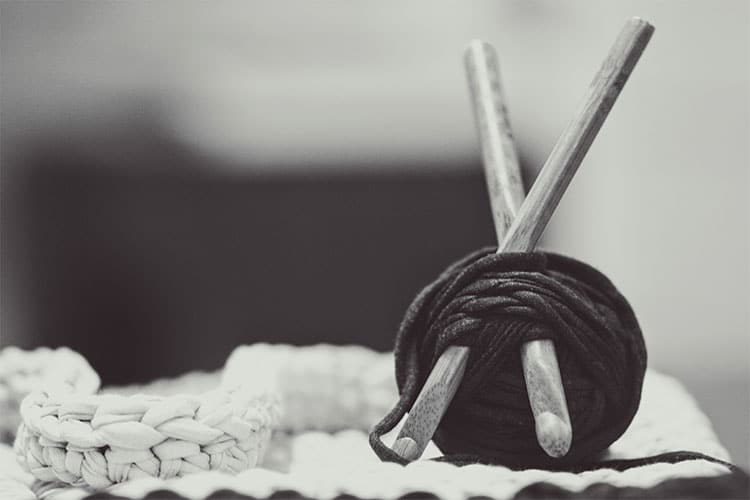
The first and easiest way to make your yarn go farther in a project is to make a gauge test and adjust your hook size. While a general rule is that a larger hook will make larger stitches and a smaller hook will make smaller stitches, it may not always result in a different amount of yarn. Larger stitches might actually take up more yarn than a smaller stitch, even though you may have to make more stitches per row in the long run. It just depends on the type of stitch your pattern calls for (see Tip #2 for choosing crochet stitches that use the least amount of yarn).
To determine if adjusting the hook size will make a difference in the amount of yarn, identify the recommended hook size for your pattern and then select one hook size larger and one hook size smaller. Cut three lengths of scrap yarn and then make a test chain with each hook size. Once finished, count how many stitches each hook size made. The chain with the largest number of stitches should be the hook size you choose to stretch out your skein of yarn.
Extra Trick: It is important to know that while adjusting the hook size may save some extra money on the finished product, adjusting hook size might also adjust the final size of your project. It’s not recommended to dramatically adjust the hook size for tightly fitted wearables as it could make the garment not fit properly. Match your gauge swatch carefully to the pattern or choose a different project to save yarn on.
Choose your stitches carefully.
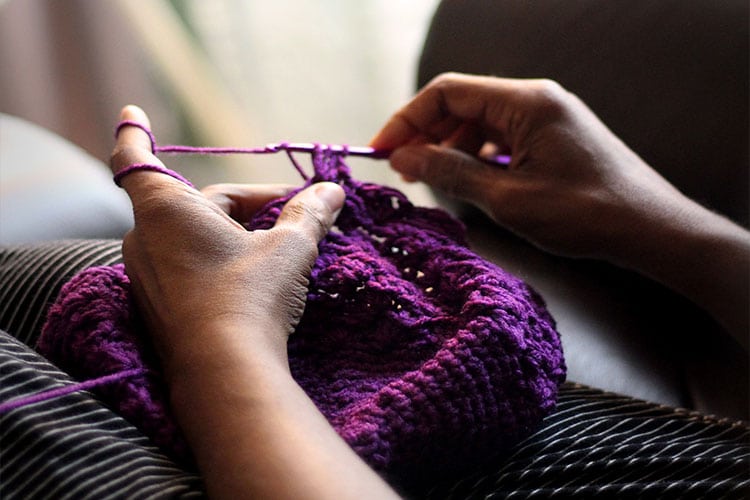
When it comes to stretching your yarn stash, another way to make a skein go farther is to select a crochet stitch that uses less yarn. Not all crochet stitches are created equal when it comes to length and height. Some crochet stitches only add a small amount of size to a project while others leave large open spaces, or “air” in the project.
Extra Trick: So which stitches use the least yarn? Open work mesh patterns and lacy stitches tend to use less yarn. Open work mesh stitches include stitches like the V stitch, double crochet mesh or a ripple lace stitch that have large open spaces or “air” between the stitches. The extra space left allows a skein of yarn to stretch a bit longer than smaller and bulkier patterns. Open work mesh and lace gives projects a breezy or airy feel and is well-suited for projects like scarves or summer wearables.
Change the pattern size slightly.
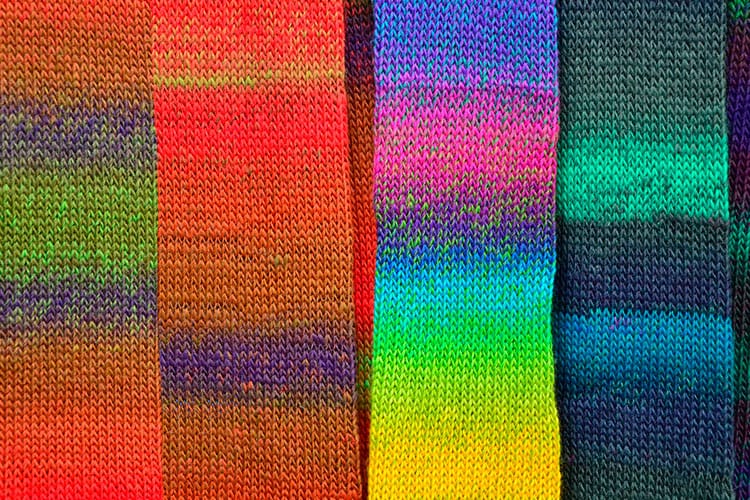
A third way to make a yarn stash go further is to tweak the pattern. This is perfect for projects like scarves, dishtowels or afghans where as long as the general shape is consistent, the total number of stitches per row, or the total number of rows can vary slightly. Consider making a row one or two stitches shorter than the pattern recommends. Or make a few less rows on the total project than the pattern originally called for.
The simple math of this yarn-saving trick can quickly add up to big savings on a project. Consider a rectangular pattern that calls for 100 stitches per row for approximately 50 rows. By decreasing the original chain by 5 stitches, over the 50 rows that’s 250 fewer stitches! Depending on how much yarn your gauge calls for, that could be a big savings in total yarn.
Extra Trick: As noted above, the best patterns to decrease stitches on are those that come with finished size ‘guidelines’ but not a fitted or firm size. It is also best to avoid patterns with complicated stitch patterns like cables or patterns with frequent increasing or decreasing stitches.
Choose small patterns.
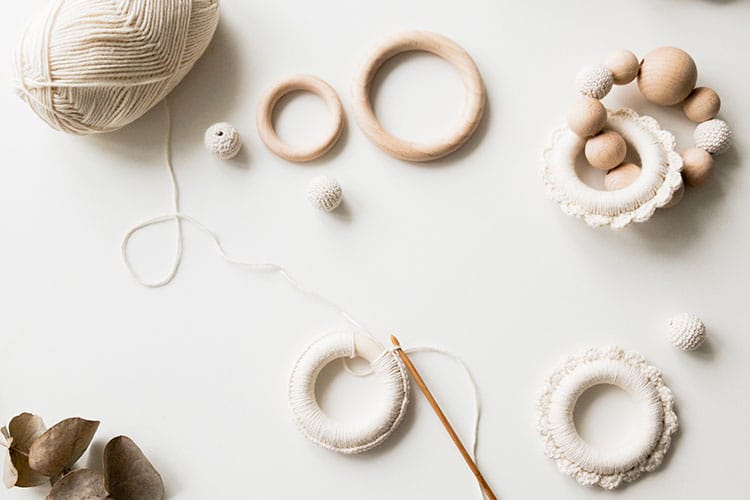
It may go without saying, but one way to make your yarn stash go farther is to choose smaller crochet patterns. For example, maybe you need to create a crocheted gift for everyone in your office. Or you’d like to crochet an heirloom item for each one of your family members. If you’d like to save on the expense (or use up yarn in your existing stash), choosing a smaller project can be a good solution.
Projects like baby clothes, amigurumi, dishtowels or pet toys take far less yarn than adult clothes or blankets. Search online or at your local craft store for patterns that take one skein of yarn or less to make.
This is also a good solution for expensive luxury yarns. While specialty yarns (hand-dyed, exotic fibers, super bulky, etc.) are exciting to crochet with, the sticker price might make some large projects unaffordable. Choose small patterns to help your luxury yarns stretch further.
Buy yarn carefully to get the most length for the best price.

One thing that beginning crocheters learn very quickly is that yarn does not come in one standard skein size. Although it certainly would be easier to calculate, each brand chooses a weight for each type of yarn sold. While there is an estimated yardage on the skein, no two skeins will be exactly the same length even though the weight is the same. When purchasing yarn on a fixed budget, it’s important to watch both the weight and estimated length to stretch your skein the farthest.
For example, heavier fabrics like wool and cotton will weigh more than a synthetic fiber like acrylic. Therefore, for two skeins that weigh exactly the same in grams, you will likely get more yardage of the lighter, synthetic fabric than the heavier wool or cotton fiber. While sometimes specialty fibers are necessary for the outcome of the project, in cases where you simply want the most value, choose the fiber that gives you the most yards per weight.
By carefully watching the weight and the yardage, you can better stretch your budget to get the most yarn for the best price.
What to do if you run out of yarn in the middle of a project.
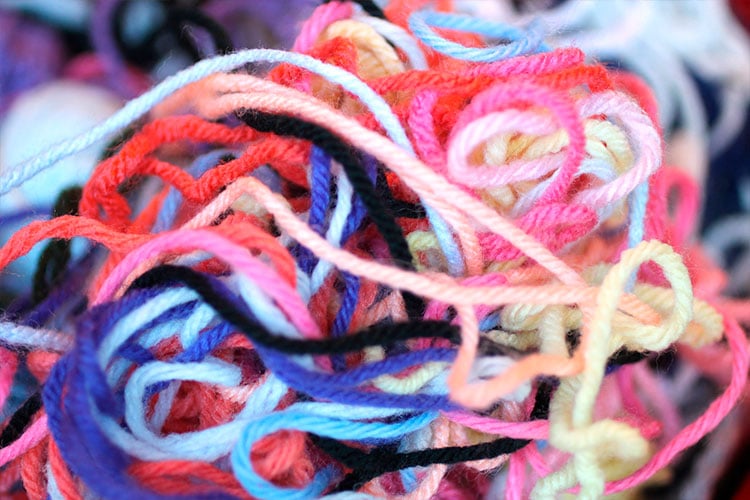
Perhaps the need to make your yarn go further is not related to your budget, but because you are about to run out of yarn in the middle of your project. Cutting it too close with the yarn you have left happens to both beginning and experienced crocheters. There are some handy tricks though if you find yourself anxious about running out of yarn before your project is complete.
Tip #1 – End the project early.
If you find yourself nearing the end of your yarn for a project but still not finished with the pattern, decide if you can just stop where you are. Some projects like scarves, blankets, and dishcloths are okay to end a few rows early without changing the overall outcome of the project. If your project will still be visually appealing and functional when it’s finished, save enough yarn to bind the project off and end early.
Tip #2 – Add a stripe or change colors before the cast off point.
If ending a project early is not an option, consider changing to a different yarn color at the point where you run out of your original yarn. Adding in a stripe or a border of a contrasting color yarn can get you through those last few rows without changing the overall look of the project. Sometimes, that extra bit of color adds the perfect bit of visual interest that would otherwise be missing from the pattern. Adding in stripes or borders is also an option at the beginning of a project if you know upfront you won’t have enough to finish the project with.
Tip #3 – Change to a stitch that requires less yarn.
As mentioned earlier, certain crochet stitches require less yarn than others. If you’re reviewing a pattern and are concerned you might run out of yarn before the end, choose a point during the pattern to substitute the recommended stitch with one that uses less yarn.
For example, if a blanket pattern called for popcorn stitches (a high-density stitch that uses a lot of yarn) throughout the entire project, consider adjusting the pattern to popcorn for 10 rows and then switch to a more open stitch for the next 4-5 rows. Then alternate back to the popcorn stitch. By mixing in just a few rows of an alternative stitch that uses less yarn, you can stretch out your yarn further.
Tip #4 – Add a fabric panel or a contrasting fringe.
One final strategy, if you’re nearing the end of a skein before your project is done, is to mix up the media you’re using. Add a fabric panel to your project or try a contrasting fringe made out of a different yarn or different color. Not only can these function to help finish off the project, but they can also become one-of-a-kind creations.
Tip #5 – Ask online forums for matching yarns.
If all else fails and you’re likely to run out of yarn before the end of a project, don’t panic. If you’ve purchased the yarn recently, contact the yarn store and ask if the matching dye lot or the same product is still available. You’ll have to cut into the yarn budget, but some projects are worth it.
If the yarn is vintage, was a gift from someone else, or if it’s been several years since you purchased it, returning to the store to buy more might not be an option. In this case, there are several online forums where you can contact fellow crocheters to see if they have the same yarn in their own stash. Post the label of a particular skein of yarn and you might just find someone willing to sell you exactly what you need to finish your project.
Related Questions

Does crochet use more yarn than knitting?
There’s a lot of debate online about whether crochet projects or knitting projects use more yarn. At first glance, one might think that crochet projects use more yarn because the finished fabrics tend to be heavier and denser than knitted ones. However there are several articles that show that depending on the type of crochet stitch you use, you can create a similar or larger size gauge swatch than with the same amount of knitted yarn. Altering hook size and needle size can also influence how much yarn is used. If you are unsure of whether crochet or knit stitches would be better for yarn, create a test gauge and measure your stitches per inch.
What are other ways to save money on crochet?
If you are on a tight craft budget but don’t necessarily want to scrimp on yarn, there are other ways to save money and still make great crochet projects. First, be sure to shop for bargains and buy yarn online. In many cases, you can find deep discounts on yarn and craft supplies if you look for clearance yarns or yarns a store is no longer going to carry.
Another way to save money is to use free patterns instead of purchasing expensive pattern books or .pdfs. Search online for free patterns of an item before you buy a pattern. Also, check for crochet books at your local library. These books are free to borrow and save you from having to purchase the entire book for just one or two patterns you plan to make.
Joining a crochet group is also a good way to save money on crochet projects. Group members can share patterns, swap yarns from their stash, and borrow equipment so you don’t need to purchase a crochet hook in every single size. Crochet groups are also great to help with challenging patterns or mistakes. That way you always complete a crochet project rather than have the expense of buying the yarn, starting the project and never finishing it.
Finally, one of the heartbreaking ways that crochet gets expensive is when projects don’t get cared for after they are finished. There’s nothing worse than finishing a sweater only to have it shrink the first time it’s laundered. Not only are you out the cost of the yarn, but you’re also out the time it took you to make the project. Always make sure you read the care instructions on your yarns and take care of your projects once they are finished. The same goes for gifts. Write down how to care for yarn and pass that along to make sure those projects are well cared for also.
I’ve got the opposite problem. I have WAY too much yarn and need to use it up quickly. What types of projects and crochet stitches will burn up the most yarn?
Occasionally you have the opposite issue and have way too much yarn on your hands. Perhaps the yarn has lived in your yarn stash for a long time, or you need to downsize your stash before you are able to purchase more. If instead of trying to save yarn, there are several types of projects that can help you burn up more of your unwanted stash.
First, you can adjust any of the strategies above used to save yarn, only adjust them in the opposite direction. Changing the hook size, adding rows or stitches, or changing stitch type are all ways to use more yarn than recommended in the project. Specifically, consider switching out the recommended stitch with textured crochet stitch. Stitches like bobbles, popcorn, or crocodile stitches use more yarn because you are working multiple stitches over the top of one another. Projects with cables are also notorious for using lots of yarn.
Finally, if you don’t have a clear use for a yarn project for your personal home, consider crocheting a project to donate. If your own children are grown but you have leftover baby yarns, many children’s hospitals will accept small hand-crocheted items and baby blankets. Many hospice and memory care facilities might also appreciate your left-over yarn stash crocheted into a lap blanket or chemo cap. You could also donate your leftover yarns to a community education group that might be able to use it to teach someone else how to crochet. Search online for projects in your local community that could benefit from the yarn that you might not otherwise have a use for.

